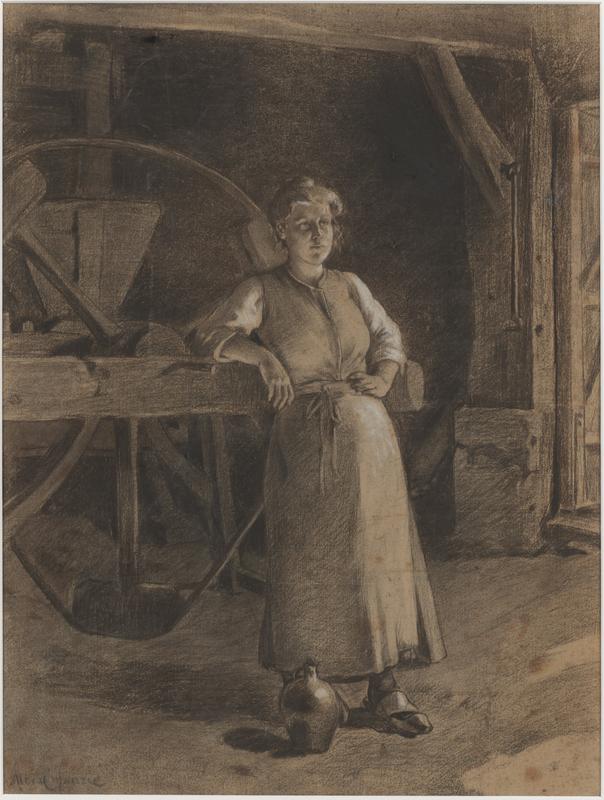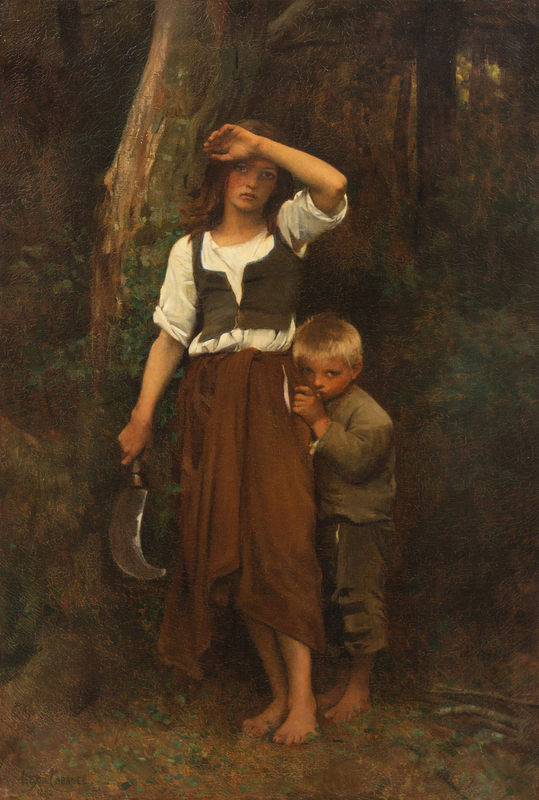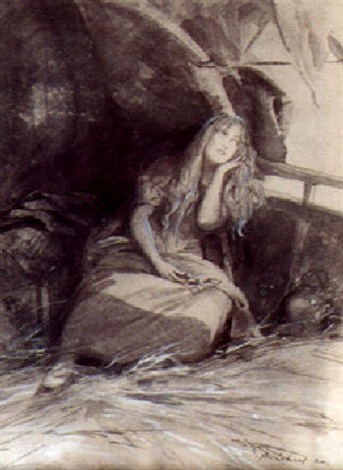
44. Attributed to Alexandre Cabanel, The Miller’s Wife
| Artist | Attributed to Alexandre Cabanel, French, Montpellier 1823–Paris 1889 |
| Title, Date | The Miller’s Wife (La femme du meunier), not dated |
| Medium | Charcoal, crayon, and white chalk on gray laid paper |
| Dimensions | 24 × 18 1/8 in. (61 × 46 cm) |
| Inscriptions + Marks | Lower left: Alex Cabanel | Watermark: CF in crest |
| Provenance | Sale, Arenberg Auctions, Brussels, March 29, 2019, no. 209; [Armstrong Fine Art, Chicago, until 2019; to Weisberg]; Yvonne and Gabriel Weisberg, Minneapolis |
| Exhibition History | "Reflections on Reality: Drawings and Paintings from the Weisberg Collection," Mia, 2022–23 |
| Credit Line | Promised gift of Gabriel P. and Yvonne M.L. Weisberg, Minneapolis |


This refined study of a woman in an old flour mill presents her with the dignity that one expects in a realist drawing. The figure is calm, strong, self-satisfied—almost monumental. As she takes a break from operating the grinding mill behind her, she is bathed in a warm light filtering in from the right.
The sheet is signed “Alex Cabanel,” as was the practice of Alexandre Cabanel, one of the most successful artists in nineteenth-century Europe. Apart from his activity as a portraitist, he normally produced historical and mythological pictures—genres diametrically opposed to Realism. He was also known for imparting extremes of emotion in his work. The question arises, then: is this sketch by Cabanel? He had hundreds of students, many highly skilled. Could one of them have hoped to get a better price by applying the famous artist’s name to this drawing?
Another possibility is that Cabanel dipped his toe into the realist pool; occasionally a drawing or painting surfaces that suggests this may be so. The painting The Rovers of the Ardennes, which appeared at auction in 2019, is signed “Alex - Cabanel” and dated 1882 (fig. 1). It shows a woman and a young boy in a forest, dressed as peasants; as if to shield the boy, she carries a curved knife used for harvesting and pruning. The drawing Day Dream, auctioned in 1997 (fig. 2), shows a young woman in distress, seemingly huddled against the gunnel of a ship as winds blow water over the deck. It is signed “A. Cabanel” with an illegible suffix. Both works portray figures probably from the lower rungs of society, a subject not uncommon for Realism. Yet both are full of emotion and portray women in danger, which is not in the realist vein.
Cabanel was a master draftsman. He produced many studies of figures and parts of the body. He also made compositional drawings. Drawings as finished, independent works, however, seem rare for him. Though he was fully capable of producing works such as The Miller’s Wife, it remains curiously unlike anything so far attributed to him.
TER